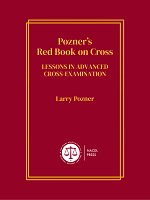- New Mexico has a three-strikes law that mandates life (with parole) sentences upon a third conviction for a violent felony.
- New Mexico divides juvenile defendants into three categories; the classifications determine both the procedural protections the juveniles receive at trial and whether they may face an adult sentence.
State Constitution
Art. 2, §13. Bail; excessive fines; cruel and unusual punishment: All persons shall, before conviction be bailable by sufficient sureties, except for capital offenses when the proof is evident or the presumption great and in situations in which bail is specifically prohibited by this section. Excessive bail shall not be required, nor excessive fines imposed, nor cruel and unusual punishment inflicted.
Bail may be denied by the district court for a period of sixty days after the incarceration of the defendant by an order entered within seven days after the incarceration, in the following instances:
- the defendant is accused of a felony and has previously been convicted of two or more felonies, within the state, which felonies did not arise from the same transaction or a common transaction with the case at bar;
- the defendant is accused of a felony involving the use of a deadly weapon and has a prior felony conviction, within the state. The period for incarceration without bail may be extended by any period of time by which trial is delayed by a motion for a continuance made by or on behalf of the defendant. An appeal from an order denying bail shall be given preference over all other matters.
Sentencing Statutes
Basic Sentences; Criminal Sentencing Act
The state follows a statutory system of “Basic Sentences:”
- If a person is convicted of a noncapital felony, the basic sentence of imprisonment is as follows:
- for a first degree felony resulting in the death of a child, life imprisonment;
- for a first degree felony for aggravated criminal sexual penetration, life imprisonment;
- for a first degree felony, eighteen years imprisonment;
- for a second degree felony resulting in the death of a human being, fifteen years imprisonment;
- for a second degree felony for a sexual offense against a child, fifteen years imprisonment;
- for a second degree felony, nine years imprisonment;
- for a third degree felony resulting in the death of a human being, six years imprisonment;
- for a third degree felony for a sexual offense against a child, six years imprisonment;
- for a third degree felony, three years imprisonment; or
- for a fourth degree felony, eighteen months imprisonment.
N.M.S.A. § 31-18-15(A).
Sentencing courts, however, may alter a basic sentence pursuant to the state’s Criminal Sentencing Act. N.M.S.A. § 31-18-15(B).
This adjustment may be based upon a finding by the sentencing judge of mitigating circumstances. See State v. Juan, 148 N.M. 747, 760 (2010) (addressing the statute’s application in the wake of the Supreme Court of the United States’ holding in Cunningham v. California). Such a reduction is limited to one-third of the basic sentence. N.M.S.A. § 31-18-15.1(G).
An upward adjustment must be based upon a finding by a jury or judge (if the defendant waived a jury trial) beyond a reasonable doubt of an aggravating circumstance related to the offense or the offender. N.M.S.A. §§ 31-18-15.1(A)(2); 31-18-15.1(B).
Three strikes law
When a defendant is convicted of three violent felonies, and each is part of a separate transaction or occurrence, the defendant must be sentenced to life in prison (with parole). N.M.S.A. 31-18-23(A). A violent felony conviction received before the defendant turns 18 does not count as a strike. N.M.S.A. 31-18-23(C). “Violent felonies” are limited to: first and second degree murder; shooting at or from a motor vehicle, resulting in great bodily harm; kidnapping resulting in great bodily harm inflicted upon the victim by the captor; criminal sexual penetration; robbery while armed with a deadly weapon resulting in great bodily harm. N.M.S.A. 31-18-23(E).
Serious youthful offender/youthful offender law
New Mexico divides juvenile defendants into three categories, which determine both the procedural protections they receive at trial and whether they may face an adult sentence: (1) serious youthful offenders, who are juveniles between 15-18 charged with first-degree murder and subject to adult penalties; (2) youthful offenders, who are between the ages of 14-18 and, upon conviction for certain enumerated violent crimes, are subject to a special sentencing hearing at which the court determines not only the length of the sentence, but whether the offender will be punished as a juvenile or adult; (3) and delinquent offenders, who may only be sentenced as juveniles. N.M.S.A. §31-18-15.2; see State v. Jones, 148 N.M. 1, 4 (2010).
A juvenile sentenced as a serious youthful offender or as a youthful offender may be sentenced to less than the minimum term of imprisonment mandated for adults by statute. N.M.S.A. §31-18-13(B).
Case Law
General
Appellate courts review sentencing determinations under an abuse of discretion standard, but review application of the law to facts de novo. State v. Consaul, 2012 WL868811, *11 (N.M.App. 2012) (unpublished opinion) (quoting State v. Martinez, 145 N.M. 220 (2008)). This means that where an otherwise discretionary decision is premised upon misunderstanding of the law, the court reviews de novo. State v. Browning, 2011 WL2042048, *6 (N.M.App. 2011).
The sentencing court may alter the basic sentence for noncapital felonies if the court finds “any mitigating circumstances surrounding the offense or concerning the offender.” State v. Juan, 148 N.M. 747, 760 (2010).
Proportionality
In order to be found cruel and unusual punishment, a punishment must be, in light of contemporary standards of elemental decency, so disproportionate to the crime that it shocks the “general conscience” or violates “principles of fundamental fairness.” In the Matter of Ernesto M., Jr., 121 N.M. 562, 568 (N.M.App. 1996).
The court reviews proportionality challenges de novo, but views the facts in the light most favorable to the district court’s decision and grants deference to the court’s decisions on matters of weight and credibility. State v. Ira, 132 N.M. 8, 14 (N.M.App. 2002). The court will find a sentence cruel and unusual only in “exceptional circumstances.” State v. Rueda, 126 N.M. 738 (N.M.App. 1998).
Leading Court Discussions of Graham and Miller
State v. Gutierrez, 2013 WL 6230078 (December 2, 2013) (Defendant’s conviction of “life plus eighteen years” does not violate Miller because it’s life with possibility of parole; even though the sentence is not mandatory, it’s proper and reasonable for court not to deviate from the sentence after hearing the testimony and taking the circumstances of Child and the crime into account.)
Severe Sentences
Court upheld 27-year sentence for conviction of three counts of drug trafficking and three counts of conspiracy to commit trafficking. State v. Reyna, 2010 WL4162110, *2 (N.M.App. 2010) (unpublished opinion) (rejecting, inter alia, defendant’s claim of sentencing entrapment, which served as the crux of his proportionality challenge).
Sentence of 91½ years for juvenile convicted of repeatedly sexually abusing his younger stepsister during a two-year period was not cruel and unusual; court noted testimony at sentencing hearing about juvenile’s violent behavior, instances of animal abuse, and expert opinion that he was a poor candidate for rehabilitation. Ira, 132 N.M. at 17.













